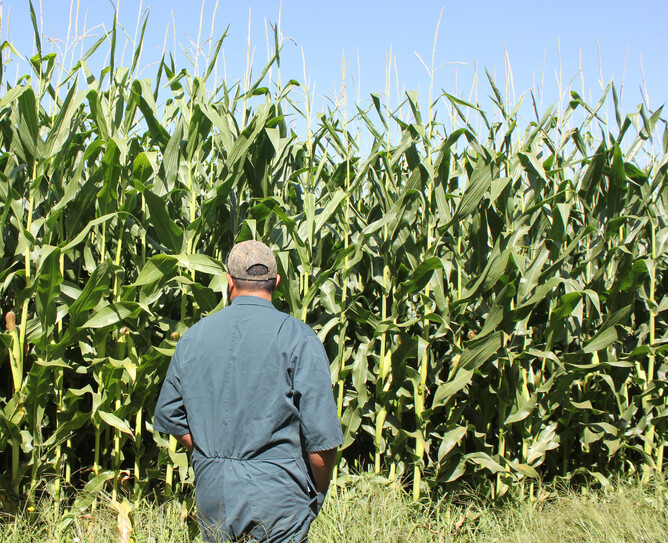With farmers having a bumper maize silage season this year, how it is harvested and managed will be crucial to preserving its quality and unlocking its nutritional value.
Cyclone Gabrielle and atrocious weather decimated a lot of last year’s maize crops. Fast forward 12 months and the Central and Northern North Island have produced excellent crops with farmers expecting yields in the high 20 tonnes per hectare, according to Pioneer Farm Systems Manager Wade Bell who recently presented to the SealesWinslow team. Canterbury and the Central Plateau are also producing record yields.
SealesWinslow Nutrition and Quality Manager Paul Drew says as harvesting gets underway, many factors can influence maize silage quality from the chop length to kernel integrity and how you manage your stack.
“Harvest time, longer chop lengths and cracked kernels enhance the availability of nutrients, while proper stack management, including drainage and covering, prevents spoilage and mold growth,” says Paul.
“Farmers should consider their maize silage harvest timing carefully. Maize silage should be harvested when whole plant dry matter is approximately 35%. An indicator of this is where the milk line is two-thirds of the way down the kernel. To confirm this, a sample should be tested, using a suitable method or in a laboratory. Harvesting at the right time ensures a better silage yield, maximizing starch content and promotes good fermentation through the ensiling process.”
Farmers should aim for a chop length of around 15-20mm for the best packing density in the stack and fermentation. Using well-maintained forage harvesters with sharp blades will also achieve a clean cut and minimise kernel damage.
Proper compaction in the silage stack is also crucial for removing oxygen and promoting good anaerobic fermentation.
“It’s all about doing the basics well,” says Paul. “Use heavy packing equipment and compact layers to achieve a dense stack. Stacks should also be well sealed to create an airtight seal and prevent spoilage.”
While maize silage is great for providing energy to herds at the tail end of the season and helping maintain body condition score, Paul says it’s not always possible to fully understand the nutritional make up and value of maize silage just by looking at it.
“Most farmers rely on visual assessment, but they can also use laboratory testing to fully understand the nutritional make up of their maize silage. Lab testing provides detailed information on dry matter content, nutritional composition, and fermentation quality, which takes out the guess work when it comes to making sure your herd is getting quality feed.”
Even with the best harvest and management, maize silage can still be deficient in minerals including calcium, magnesium, sodium, and phosphorus, which are key to cow health and milk production.
To address this, Paul encourages farmers to use a maize silage balancer specifically formulated to address these mineral deficiencies.
“This will help make sure cows receive all the essential minerals they need for optimal health, reproduction, and milk production, as well as the energy needed from maize silage to extend lactations, maintain body condition score and keep their herd healthy and productive.”
Maximising maize silage quality this season
· Harvest timing, chop length, kernel integrity, and stack management can all affect maize silage quality.
· Harvest at around 35% whole plant dry matter to optimise yield and quality, when starch availability is at its peak.
· Aim for a chop length of 15-20mm to ensure optimal packing density in the stack and fermentation.
· Make sure your blades are sharp to minimise kernel damage.
· Get your stack compaction right to encourage anaerobic fermentation.
· Lab test your maize to identify its nutritional composition.
· Consider using a maize silage balancer to address mineral deficiencies and promote cow health and milk production.
